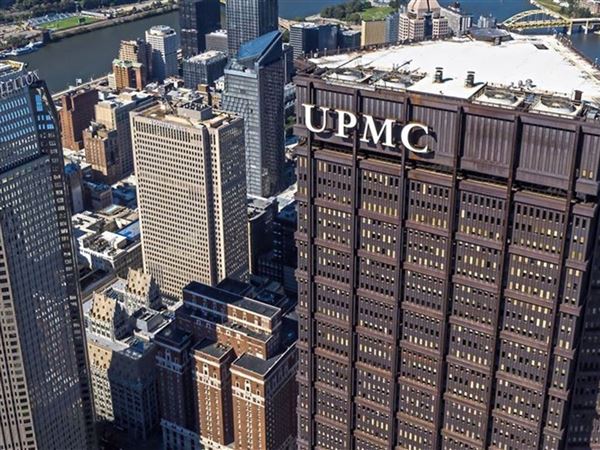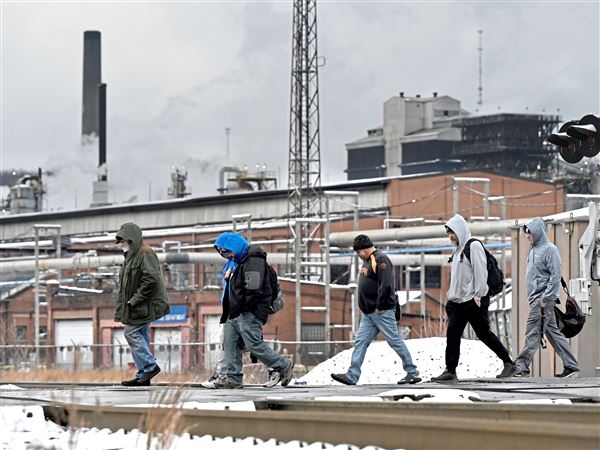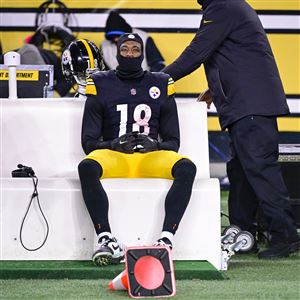Two hundred sixty-five miles separate Bruceton and Montcoal, W. Va. Near enough to drive but distant enough to call the drive long.
Bruceton is Pittsburgh's South Hills headquarters of the National Energy Technology Laboratory and home to the National Institutes of Occupational Safety and Health's Pittsburgh Research Laboratory, both descendants of the United States Bureau of Mines. Montcoal is the site of the West Virginia coal mine explosion that claimed the lives of 29 men in early April.
The two places have little in common except for mutual recognition of the fact that coal mining is a dangerous endeavor. At Bruceton the fact is a matter of scientific inquiry. At Montcoal it is a matter of painful reality.
For both places, the problem is persistent, stubborn and old.
Two thousand years ago, the Roman naturalist Pliny the Elder wrote about miners being killed by poison gas. Fifteen hundred years later, Georgius Agricola wrote about men being buried alive by cave-ins, killed and maimed by stagnant air, falls from ladders, and drowning in mine sumps.
Two hundred years ago, the industrial revolution made the situation worse, thanks to the advent of the steam engine which increased demand for coal, and the invention of high explosives which made extracting coal easier.
In the last seven decades of the 19th century, coal production in the United States increased more than a thousand-fold, from 240 thousand tons in 1829, to 253 million tons in 1899. Not unpredictably, mine injuries and fatalities increased too.
Despite Pennsylvania's enactment of the nation's first mine safety law in 1869, mine safety proved to be stubbornly elusive. Increased production in combination with ignorance of the principles of safe mining resulted in more injuries and deaths year after year.
Then in 1897, the situation deteriorated further when miner compensation was altered to reflect "run of mine" or total mine output.
Prior to that time, miners were paid for the quantity of broken coal they produced. With the new method, they were paid by the total amount of coal produced by the entire mine. Since minershad the incentive to produce more unbroken coal, they used larger explosive charges, which produced the desired effect -- more coal.
Unfortunately, they also produced more mine explosions.
Despite intermittent efforts to establish a federal mine safety agency, the problem was left to the states until 1907 by which time an average of nine men a day were dying in mine accidents in the United States. On June 10 of that year, the secretary of the interior assigned the task of improving mine safety to the Technological Branch of the U.S. Geological Survey. Due to legal concerns about federal infringement of states' rights, the mandate was limited to the federal territories of Oklahoma and New Mexico.
Then, in December 1907, just six months after the Technological Branch's new assignment, a stunningly tragic succession of events capped the already dismal year.
In the first 20 days of the month, 692 miners died in four mine explosions in Pennsylvania, West Virginia and Alabama. The month became known as Bloody December. Succumbing to the public outcry, in 1908 Congress designated funds for the U.S. Geologic Survey to expand its investigations of mine explosions to include, not just the federal territories, but all the states. Notably, the legislation prohibited the inspection of mines that had not experienced an explosion.
The task was lead by a dynamic, young South Carolinian who eventually would head the Bureau of Mines, named Joseph Austin Holmes. To begin, Dr. Holmes and two colleagues gathered data from the state departments of mines as well as from six European countries.
Domestic data showed that injuries and deaths in U.S. coal mines had almost doubled between 1900 and 1906. The resulting report concluded that a failure to enact enforceable mine regulations and to methodically investigate the causes of mine accidents, had resulted in a U.S. mine accident death rate exorbitantly higher than those of European countries.
The statistical evidence having been compiled, scientific tests of the conditions under which mine explosions occurred were deemed to be in order.
To do the testing, the Pittsburgh Explosives Testing Station began operations at the Allegheny Arsenal, along the Allegheny River, between 39th and 40th streets in Lawrenceville on Dec. 3, 1908.
In that day, mine explosions were generally acknowledged to occur when a combination of airborne coal dust and/or mine gas became exposed to heat from a spark or flame. However, the exact proportions of air, fuel, heat and atmospheric conditions necessary to produce an explosion remained matters of scientific uncertainty. The practical effect of this lack of knowledge was to foster the continuation of such potentially disastrous practices as the use of open-flame lamps for mine illumination, spark-producing electric motors for haulage and coal dust for packing explosive charges.
Ideally, mining with explosives called for tamping up to a few pounds of explosive powder into a hole drilled into the face of a coal seam followed by several pounds of non-explosive material, such as clay. The clay packing material, called stemming, served to direct and confine the explosive force and flame to the interior of the coal bed.
However, the use of larger explosive charges sometimes resulted in the expulsion of both a flame and the packing from the bore hole. Such a misfire was known as a "blown out shot." The practice of substituting combustible coal dust for inflammable clay stemming increased the risk of an explosion during a shot blow-out by ejecting a cloud of coal dust into the air which, ignited by the heat of the explosion, would send an open flame far into the mine.
Because coal dust tends to accumulate on mine floors and walls as well as on supporting timbers, it provides a ready source of additional fuel during mine explosions. When a detonation takes place, both a pyrotechnic flame (fire) and a sonic concussion (boom) are produced. Following detonation, the attendant concussion instantaneously dislodges coal dust from nearby floors, walls and timbers, dispersing it into the air to become a secondary source of fuel which can be ignited by the heat of the first blast.
To make matters worse, the pressure wave caused by the initial blast compresses the surrounding airborne mixture, thereby lowering its flash point, much the way a piston compresses diesel fuel, causing it to explode in an internal combustion cylinder.
In a mine environment the combination of flame, concussion, compression and heat greatly increases the likelihood of extending the explosion to adjacent areas of a mine. Among explosion experts, this phenomenon is known as "propagation."
That's what we know today. In 1908 it was all conjecture. The Pittsburgh Explosives Testing Station's task at hand was to turn the conjecture into science.
The station was quartered in five buildings at the Allegheny Arsenal. The operation was fully outfitted with machinery, equipment, materials and apparatus for its scientific, technical and administrative tasks. Perhaps most impressive of the apparatus was a pair of outdoor explosion galleries -heavy steel tubes taller than the average man and longer than a tennis court -- that allowed the precise scientific observation and measurement of coal dust and mine gas explosions.
The 100-foot long by 6-foot, 4-inch diameter galleries were made of 15 heavy tubular steel sections, 6-feet-8 inches long each. The firing end, where charges were detonated, was fortified with an 8-by-8-by-12-foot concrete block, into which was set a 16-inch cannon with an 8-inch bore to simulate shot blowouts.
In an extensive series of tests conducted between Sept. 3 and 27, 1909, researchers established some of the fundamental relationships between various sizes of coal dust particles and explosive charges as they influenced the ignition and propagation of mine explosions. The station also developed laboratory apparatus to test the explosive characteristics of mine gas when exposed to sparks and flames from electric switches, motors and lamps.
But the Pittsburgh Explosives Testing Station was only the seed of the enterprise that would evolve into a world center of mine safety science.
Just two years after the station's establishment, on May 16, 1910, Congress authorized the creation of the U.S. Bureau of Mines. The act required the bureau find ways to improve mine safety, report its work, and make recommendations to mine owners, operators and workers. At the same time, the law contained a specific provision denying the bureau any power to inspect or supervise operating mines within the states, absent an explosion.
Under the reorganization, the Pittsburgh Explosives Testing Station was transferred from the U.S. Geological Survey to the newly formed Bureau of Mines. Despite the station's scientific achievements during its time at the arsenal, the above-ground explosives galleries did not satisfy the exacting standards of scientific precision held by the bureau's director, Dr. Holmes.
In order to ensure the authenticity of its experiments, the bureau leased a 38-acre site on a tranquil hillside, at an outcrop of the Pittsburgh Coal Seam in Bruceton.
There, in December 1910 workers began excavating the world's first full-scale, fully functional, mine-explosion test facility. The Experimental Mine was designed to serve the combined purposes of real world field test station, and theoretical science laboratory.
The inaugural celebration of the United States' odyssey to mine safety took place 99 years ago during a four-day celebration in Pittsburgh between Oct. 30 and Nov. 2, 1911. The festivities included the celebration of the 100th anniversary of the opening of the nation's western waters to steamboat traffic in 1811, demonstrations at the First National Mine Safety Day, and the first public test explosion at the new Experimental Coal Mine.
During the celebration 19,927 miners paraded silently before President William Howard Taft at Pittsburgh's Forbes Field in memory of an equivalent number of their deceased brethren who had been killed in mines during the previous 20 years.
On the rainy afternoon of the second day, a special train carried some 1,200 to 1,500 spectators from Pittsburgh to Bruceton for a tour of the Experimental Coal Mine followed by the first public test explosion.
After several failed attempts to detonate the 852 pounds of coal dust spread throughout the mine, at about 5:45 p.m., a deafening boom accompanied by flames estimated to be 500 feet in length and 200 to 300 feet high suddenly burst from the mine's three openings. A partially loaded mine car positioned 40 feet from the mouth was thrown over a fully loaded car 25 feet away.
After tumbling four times after its first landing, the airborne mine car came to rest 229 feet from its starting point. The loaded car, burdened with two tons of coal was driven with its brakes engaged 70 feet before it derailed. Support timbers flew through the air like cannon fire. Six-inch diameter posts, as long as six feet were cast up to 413 feet from the entrance of the mine. The conflagration momentarily brightened the night sky.
A tree 153 feet from the main entrance caught fire 46 feet above the level of the mine. Sand mingled with raindrops as ruptured sandbags emptied their contents into the sky. One sandbag was found 115 feet from the mine entrance.
As the crowd cheered in astonishment, mine rescue workers began to flock toward the mine to test their skills. The events of that dreary day were cause for jubilation. The experiment proved that coal dust alone, in the absence of methane and even in moisture-saturated air, could cause a mine explosion.
The field of mine safety science was officially born.
In testament to the value of BOM's work, between its inception in 1910 and its closure in 1995, mine deaths in the United States decreased by more than 90 percent.
Today, the National Institute of Occupational Safety and Health is charged with mine safety. The National Energy Technology Laboratory (NETL) does coal research. Fittingly, both agencies reside atop the same hill into which the Experimental Mine was punched a century ago.
But as glorious as the Bureau of Mines' history may be, given the Montcoal disaster, it is clear that no amount of science or technology can prevent future mine disasters without the added virtue of human vigilance.
First Published: May 16, 2010, 8:00 a.m.

















